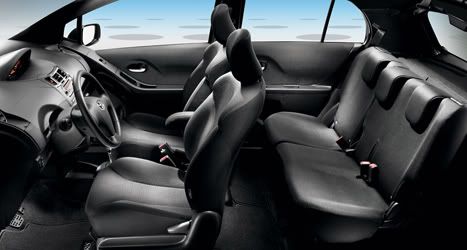
There's a bit of a debate raging at the moment as to what extent our traits are inherited. It seems likely that some things are indeed genetic, and perhaps that goes some way to explaining my obsession with cars. You see, my dad is something of a petrolhead. It was his blood red Alfa Romeo Alfetta GTV that defined my earliest memories of the motor car, and the sales brochures for the TVR Tasmin 2+2 he contemplated replacing it with that adorned my bedroom walls as a kid. Before I came along, however, my parents' choice of transport was a 1972 TVR 1600M.
Not wishing to part with his two seat toy, my father squirreled it away in a lock up garage for the next decade or two, until time, money and a grown up family allowed it to be revived in the late '90s. And so, after a thorough restoration, it's perhaps the only pristine one-owner-from new classic TVR that still regularly tackles the muddy lanes of Devon for the weekly shop. It also happens to be a kit car – the last that TVR ever built no less – and so, with the Caterham temporarily out of action, I opted to hitch a lift in the Tiv to this year's Exeter Kit Car Show.

"Do you want to have a go?" my dad enquired part through the drive way back. The offer was too good to refuse, so we promptly pulled into a lay-by and swapped seats.
Threading yourself through the low, narrow doors of the M-Series is something of an event. The leather-lined interior perfectly compliments its 'pocket GT' aesthetics, which you might be forgiven for thinking originated in Modena or Maranello, not windswept Blackpool. The exotic theme is carried over to the driving position, with long arms, comparatively short legs and the steering wheel resting on your knees. You can tell this car was designed before (the much missed and unfeasibly tall) Peter Wheeler took the reigns.
Finding the bite point on the cable-operated clutch takes some degree of practise, but we're rapidly away. One of the first things you notice is the clarity of the steering (unassisted, naturally). It has no discernable play, and every bump and ripple of the Devon lane is perfectly relayed through the chunky leather helm. It's strange, then, this early promise isn't born out in the corners. The front suspension runs very little castor, so the steering resolutely refuses to weight up, giving you little confidence in the remaining grip. It also feels like the adjustable dampers may be set a few notches too low on the front end, which comes across as a tad wayward and disconnected on turn-in.

It's a shame, because the chassis clearly has great potential. Despite dating back to the early seventies (and tracing its roots back beyond) it feels impressively rigid. There's no scuttle shake, no discernable chassis flex, and bumps are absorbed in the suspension, not the structure. It even rides well for a sports car, combining reasonable levels of comfort with relatively little roll. Steering foibles aside, the controls are basically good too. True, the 4 speed gearbox is a little vague, but the brakes combine excellent feel with plentiful stopping power and the throttle has a pleasing action to it.
Squeeze it, however, and the results aren't all you might expect. Although praised for its handling balance (and considered ultimately, by many, better than the 3-litre) the standard 1600cc M-Series wasn't an especially rapid car even in its prime. This one benefits from a somewhat tuned engine, but it's a mixed blessing. The Ford Crossflow lump takes some time to get into its stride, and flooring it in the mid range exposes a rather obtrusive flat spot in the power delivery, which ultimately leaves it feeling slower than it actually is. In reality, the performance is probably approaching warm hatch territory, with a nought to sixty of somewhere around 9 seconds.

The other thing that counts against this TVR is its soundtrack. While it emits a suitably retro burble from the outside, the experience within the cabin is dominated by a civilised, but ultimately rather mechanical noise – it doesn't belch sheets of flame and terrify passing children in the way we've become accustomed to with later models. And yet, driving the M-Series is still a special experience. Partly on a personal level perhaps, but also because it offers a rather romantic glimpse into the past, with its elegant granturismo styling and atmospheric cabin. That said, much of the driving experience still stacks up well today and the car's idiosyncrasies should be easy enough to tweak.
I already have images of an M-Series running revised suspension geometry, modern rubber and – not wishing to do anything by halves – a nice sonorous Alfa Romeo V6 thrown in for good measure. Sadly I'd never have the skill to carry out such work myself, but it seems I'm not the only one who's had the idea. My dad's also been contemplating doing just such a swap on an M-Series restoration project. Fortunately for him, my mechanical ineptitude is one genetic trait that doesn’t come from his side of the family, so it might just happen. Come on Dad, you know it makes sense.







